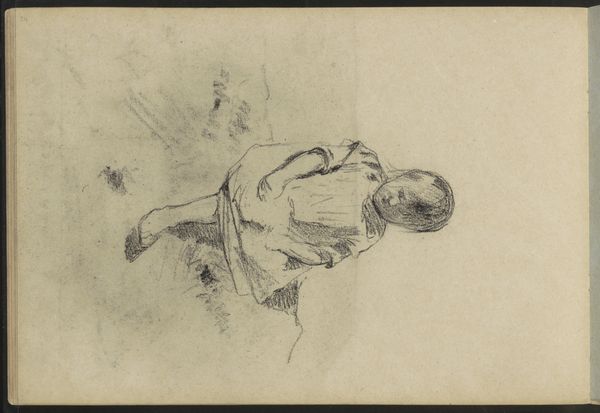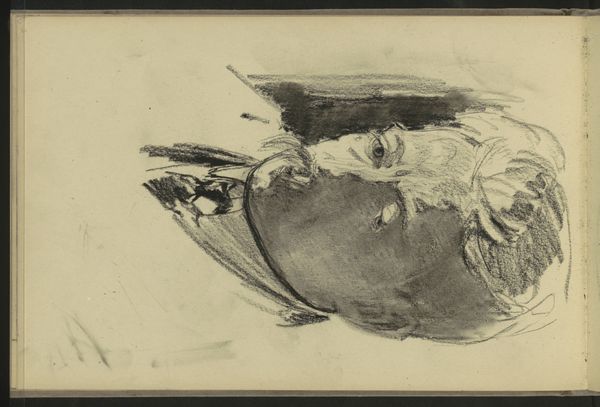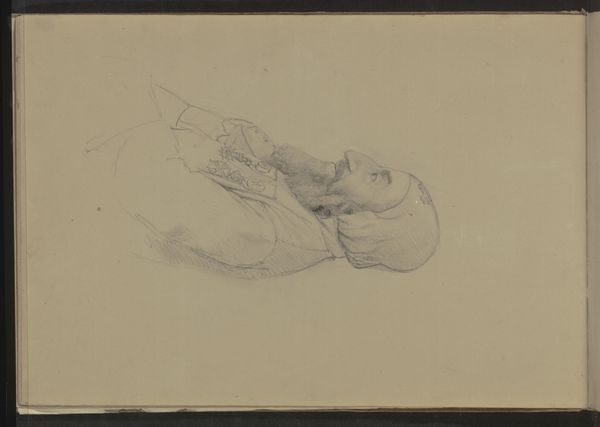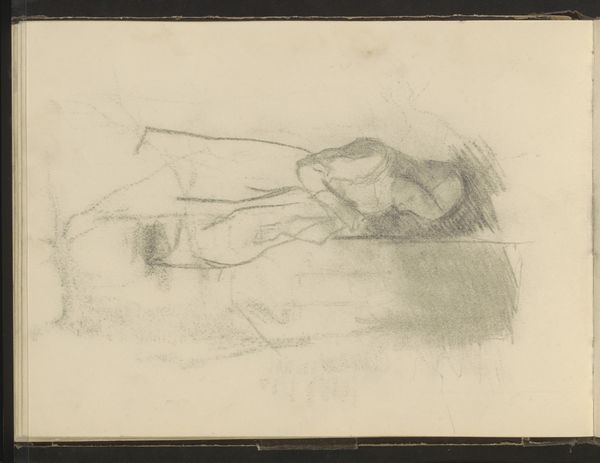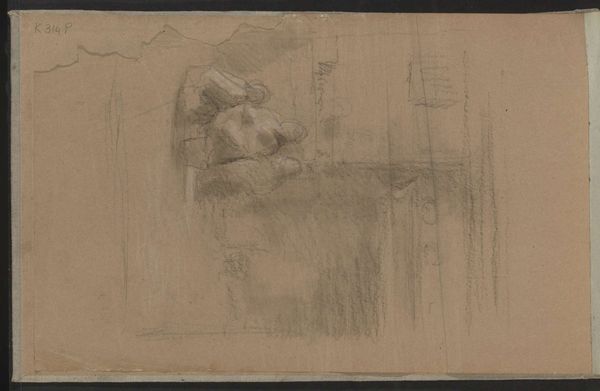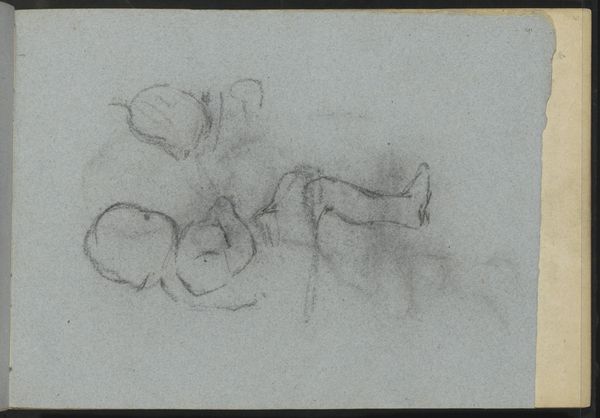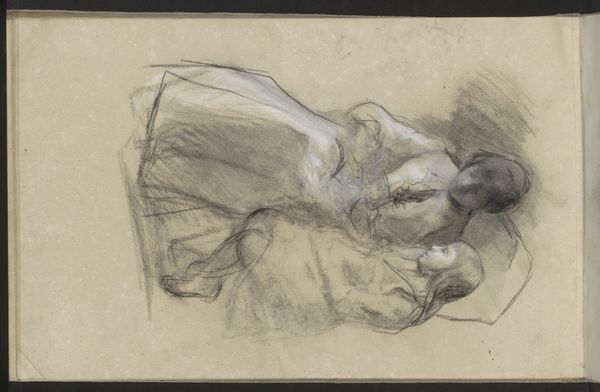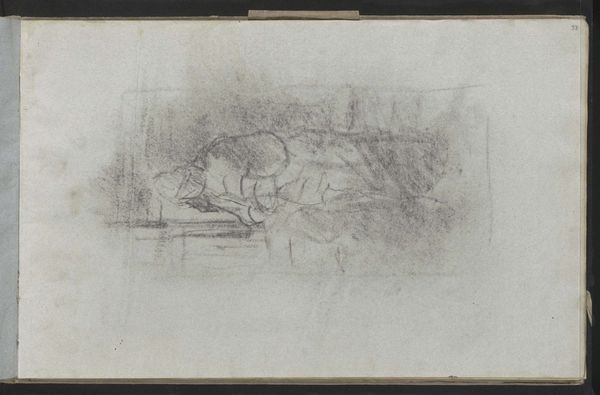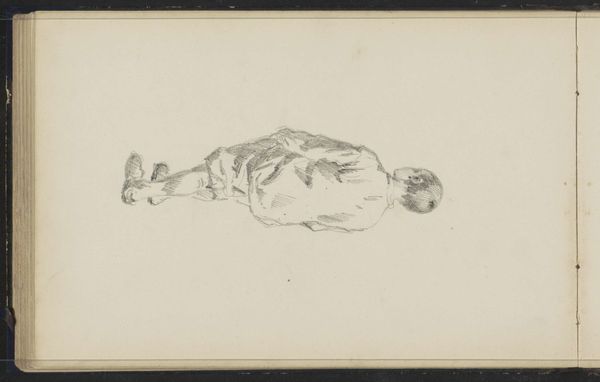
drawing, pencil
#
portrait
#
drawing
#
impressionism
#
pencil sketch
#
pencil
#
realism
Copyright: Rijks Museum: Open Domain
Editor: Here we have "Liggende boerenjongen," or "Reclining Peasant Boy," a pencil drawing by Willem Witsen from around 1884 to 1887. It feels very intimate and immediate, almost like a glimpse into a private moment. The boy's form seems to dissolve into the ground, very interesting composition! What stands out to you in this sketch? Curator: The drawing immediately reveals Witsen’s masterful manipulation of line and tone. Note how he uses the density and direction of pencil strokes to define form and create depth. The contours of the boy’s body are not simply outlined but described through a nuanced interplay of light and shadow. Consider the use of hatching to build up darker areas versus the relative bareness of the surrounding paper, which accentuates the boy’s presence. Editor: That’s a very helpful way to consider it; the hatching creates dimension. Why do you think Witsen chose such an informal composition? Curator: One might posit that the informality underscores a focus on pure form and tonal relationships rather than narrative. Witsen appears interested in exploring the inherent qualities of the medium – pencil on paper – and how these qualities can be manipulated to evoke a sense of mass, volume, and spatial recession. The lack of a fully rendered background removes any contextual distractions, leaving us to contemplate the essence of the reclining form. Editor: That’s interesting, a real study of form. Curator: Precisely! Witsen demonstrates the potential for simple lines and subtle gradations in tone to convey a powerful sense of presence and materiality. It challenges us to consider the inherent expressiveness of drawing itself, separate from any representational function. Editor: I never would have considered all of that! It definitely helps me appreciate the artwork much more. Curator: Indeed, analyzing the structural elements allows us a deeper appreciation for the artist's intention and the intrinsic beauty of the artwork.
Comments
No comments
Be the first to comment and join the conversation on the ultimate creative platform.
